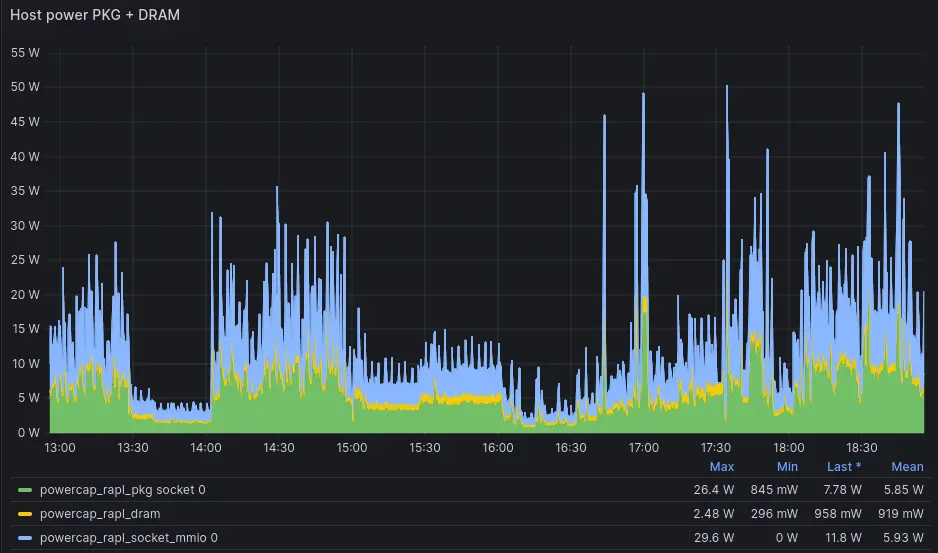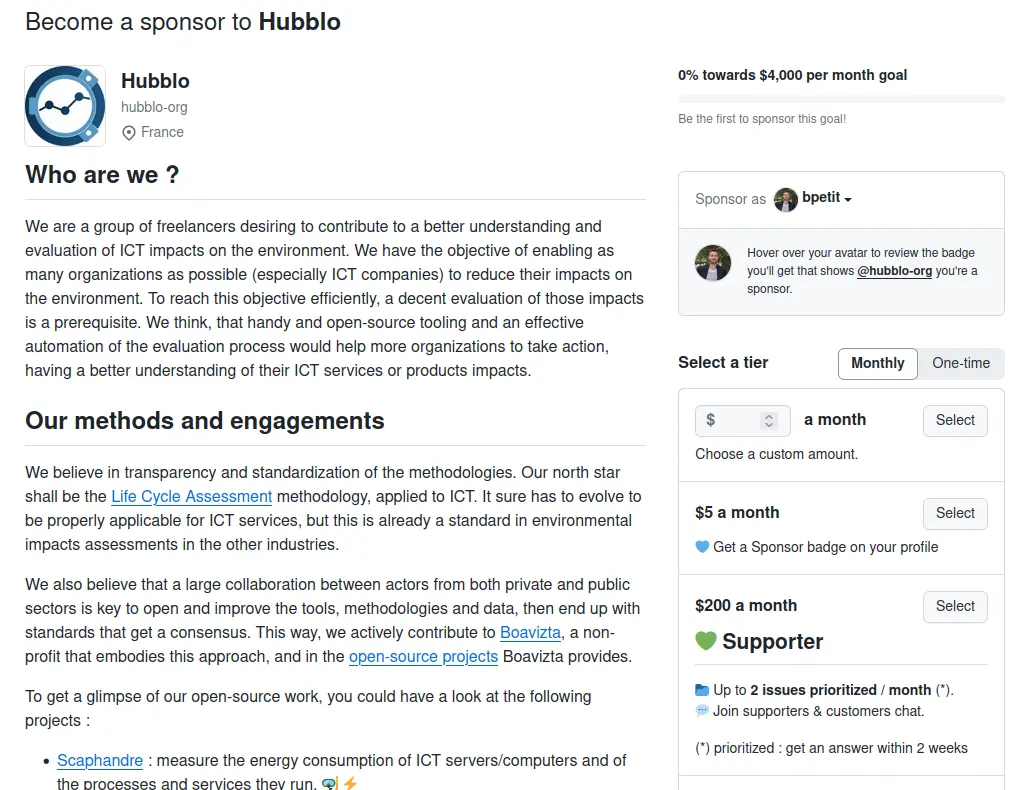
Scaphandre v1.0 is here : Windows support, IT resources metrics, packaging, and more…
V1.0 of Scaphandre has been released. It is an important milestone for the project. Here’s why.
New features
Here’s a quick overview of the new features included in this release. Linking metrics on power, energy and IT resources actually consumed on the machine is one efficient way to find optimization levers. Initially, we thought that users might have a conventional monitoring agent on their machines to get metrics on IT resource consumption. We realized that this is not always the case and that it might be useful to have (some of) them in Scaphandre. You’ll now find metrics on CPU, usage, memory usage, disk space available and used and disk reads and writes, both at the host and process levels. For use cases, where Prometheus can’t be used in pull mode, we have added a prometheus-push sensor. From now on, when available, the Platform/PSYS RAPM domain will be used as the host’s power metric, providing a much more complete coverage of the machine’s components power, than the usual Package/PKG and DRAM RAPL domains. See this section of the documentation for a detailed explanation. PSYS and MMIO domains also have their own metric when available.

Packaging and multi-platform support has improved a lot. Packages are now available for Debian 11 and 12, RHEL 8 and 9, and, last but really not least, Windows. Let’s look at this in more detail in the next section.
Windows support and packages
Scaphandre 1.0 completes the move from 0.5.0 to bring Windows support. You now have access to an installer package (that’s new) that includes a signed driver, which means you don’t need to enable Windows test mode anymore, to make it work (this is new as well). Versions we tested Scaphandre on are : Windows 10, 11, server 2016, 2019 and 2022.
Please see this section for instructions about how you can use Scaphandre on Windows. Details about this implementation and how Scaphandre interacts with its driver (and why it needs a driver) are available here.

For a full list of new features and changes, see the CHANGELOG.
Making Scaphandre a multi-platform and adaptive software : the process
In a previous post on the CNCF blog we explained the process and lessons learned in developing this v1.0. The release is here, but many outcomes are still to come. A wider coverage of a machine’s components will be one of the main focuses of the next versions, even if the RAPL Platform/PSYS domain is not available on the host. For this our team intends to work closely with the Energizta project, to build models that could complement software power measurements and be more representative of the power of the whole machine.
In addition, coverage of other platforms, such as ARM CPUs, MacOS, virtualization ecosystems such as OpenStack or VMWare are part of the roadmap, which leads us to our next topic: sponsorship.
Sponsorship
Scaphandre was born from the will of several people, joined by amazing contributors, to build a software that answers the questions : “How much energy does my software and my machine consume?” and ”What actions could I take to reduce my IT electricity consumption?”. To answer those questions in a wider range of use cases, Scaphandre needs to extend the environments it supports.
The project has lived so far mostly thanks to the consultancy services that Hubblo provides to its clients. However, this model only works to a certain extent and has its limitations, when it comes to delivering the open-source roadmap. The most important features that the community and IT practitioners could use to reduce their impact are not necessarily the ones that companies are willing to pay for. The market is still very young (even if it is already very, very, late with regard to the issues at stake). To build that broader support and those new features that will help understand and transparently report IT impacts, we need to get some upfront funding. Fundraising, welcoming investors the startup way, is not an option. Hubblo will soon be a cooperative organization, and refuses to raise funds this way, for a number of reasons, including this one : If we get investors, we might lose our free will, including to build impactful features that don’t have a market yet (and might never have one), that’s a blocker.
For these reasons, we are now announcing Hubblo’s Sponsoring program. You can either sponsor the project just to show some love or to get some support and early features properly packaged for your own needs. If you are considering it, thank you already !
Here is Scaphandre’s new release and opened discussion. Feel free to comment and raise your questions regarding this release !

hubblo